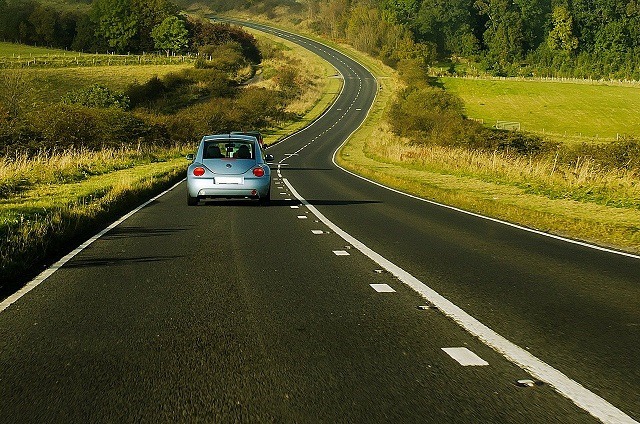What can you claim in motor expenses for a sole trader or partnership? If yours is one of the tens of thousands of new businesses that started up during the Covid-19 pandemic, the first reporting period end will be very close, if not already passed.
And if you use a private vehicle to drive to meetings, the local stationery store or even just to the post office to send some mail to a client, it is important to know what motor expenses you can claim.
If you’re a sole proprietor or a partner in a partnership, HMRC allow an array of business expenses to be deducted from your income to arrive at your taxable profits. The detailed list and guidance can be found here.
HMRC even simplify some of the expenses, meaning that you can claim for certain expenditure using a flat rate allowance rather than apportioning the actual amount spent. One such expense that falls under the ‘simplified’ category is expenditure on motor vehicles.
In this article, we’ll look at what the rules cover, what is eligible, and how to claim the expenditure. For the most part, the day-to-day jobs of a sole trader or partner not only cover carrying out income-generating work, but they also include admin, finance, recruitment and much, much more.
What is covered?
The simplified rules allow businesses to calculate their vehicle expenses by claiming a fixed rate per business mile instead of keeping a detailed record of actual expenditure in the year.
The fixed rate mileage claim incorporates the costs of buying, running and maintaining the vehicle in addition to the depreciation, i.e. the ‘wear and tear’. In other words, it covers all of the expenditure that you might expect to incur relating to a vehicle, with the added benefit of claiming by business mile instead of having to keep records of each individual piece of motor related expenditure over the course of the year.
It is worth noting that certain expenses that may be incurred as part of an individual journey, such as parking and congestion charges, are not incorporated in to the fixed rate due their incidental nature. However, these expenses are still allowable, on the basis that they are incurred solely for business purposes, so records of these should be maintained.
What is eligible?
The mileage rate can be claimed on any journey that is carried out wholly and exclusively for business purposes. Any private journeys, such as from home to your permanent place of work, or those that have a dual purpose (private and business) may not be claimed.
As an example, if you were required to go to a business meeting away from your permanent place of work and you went straight from home to the meeting, the mileage relating to this journey would be eligible for a fixed rate mileage claim.
If, in a more complex example, you were required to stop at your business premises prior to travelling to the meeting, this home to business premises stage of the journey would not qualify for the fixed rate mileage claim, due to it being your normal commute. Only the subsequent mileage from your business premises to the meeting would be eligible.
There are some further, more complex scenarios relating to the fixed rate mileage claim and in particular, what defines a ‘permanent workplace’. If you have any doubts over what is a qualifying journey, please don’t hesitate to get in touch.
How to claim
As mentioned above, any business mileage up to 10,000 miles per tax year is claimed at 45p per mile. Any miles travelled upwards of the 10,000-mile threshold is subsequently claimed at 25p per mile. A log of business mileage should be maintained to support any flat rate mileage claim made.
The mileage log could be as simple as having a column for the following;
- Date of travel
- Where you travelled from
- Where you travelled to
- Number of miles travelled
Once the total mileage has been calculated for the year, and the rates applied to the relevant number of miles, this should be shown under ‘motor expenses’ on your tax return, or within the same heading on your business accounts.
Illustrative example
Tim is a self-employed vet, who often travels to patients’ houses to check on recovering pets. In the year, Tim travelled 10,500 miles relating to these check-ups in his private vehicle. Because these journeys are all business journeys, i.e. carried out wholly and exclusively for business purposes, the mileage all qualifies for a fixed rate claim.
The first 10,000 miles are calculated at 45p per mile, with the remaining 500 miles at 25p. This equates to a total mileage claim of £4,625. Tim would enter this figure in ‘motor expenses’ on his tax return and/or business accounts.
Assuming that Tim’s self-employment profits were £50,000 and he paid tax at 40%, this amount of motor expenditure would reduce his profits by £4,625, saving £1,850 of tax (£4,625 x 40%), simply put.
The ‘actual expenses method’
In addition to the simplified expenses method, there is also the ‘actual expenses method’ of working out your motor expenses. This method requires the sole trader or partnership to record all motor expenses manually for the year. Once this total amount has been calculated, a percentage is applied to the total to represent the business percentage. This percentage is often calculated as the business mileage travelled in the vehicle as a percentage of total mileage for the year.
This article has been written by senior accountant, Tom Lowry. For more information on motor expenses for sole traders and partnerships, contact Tom on 01423 564 446.

